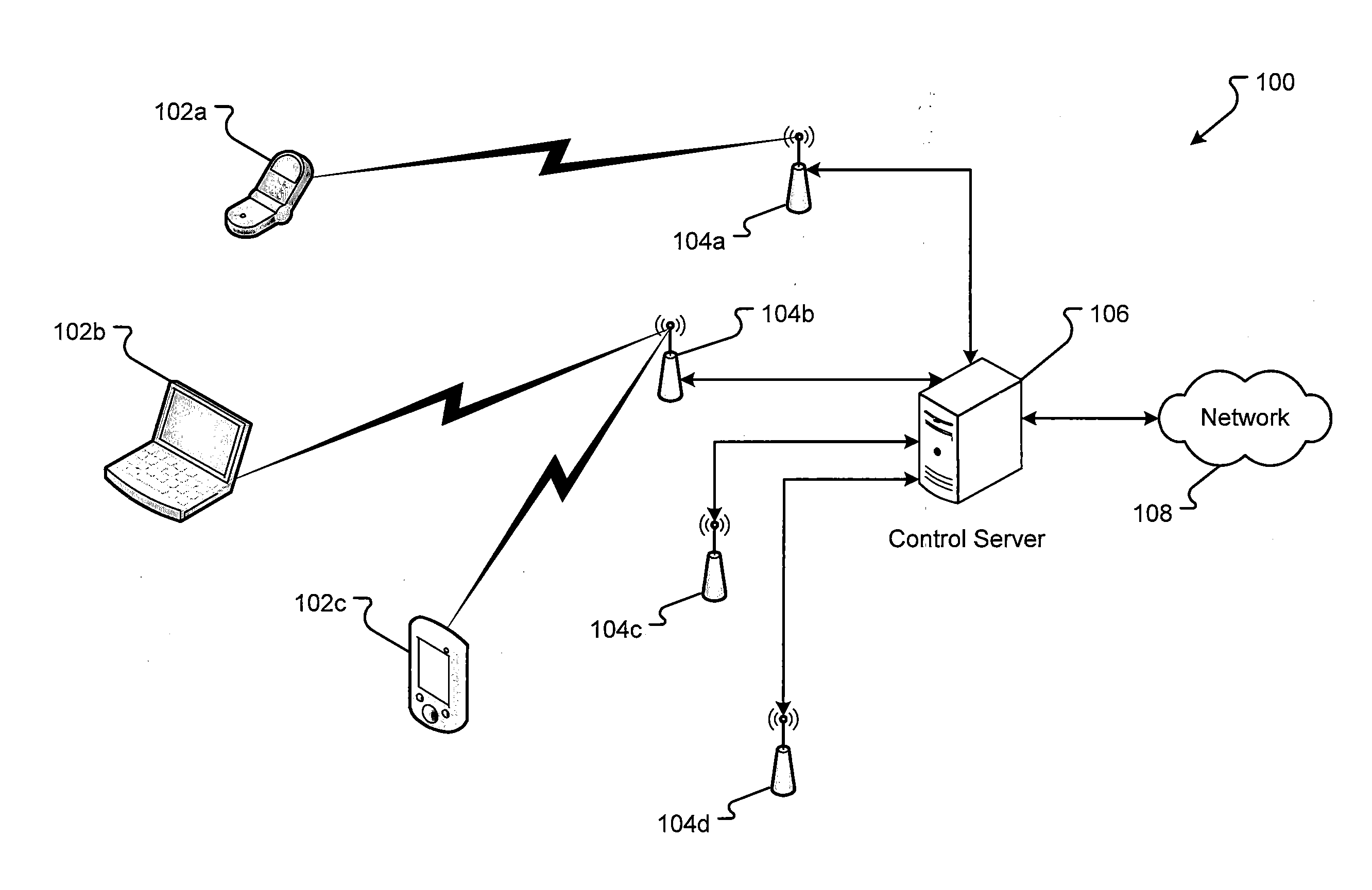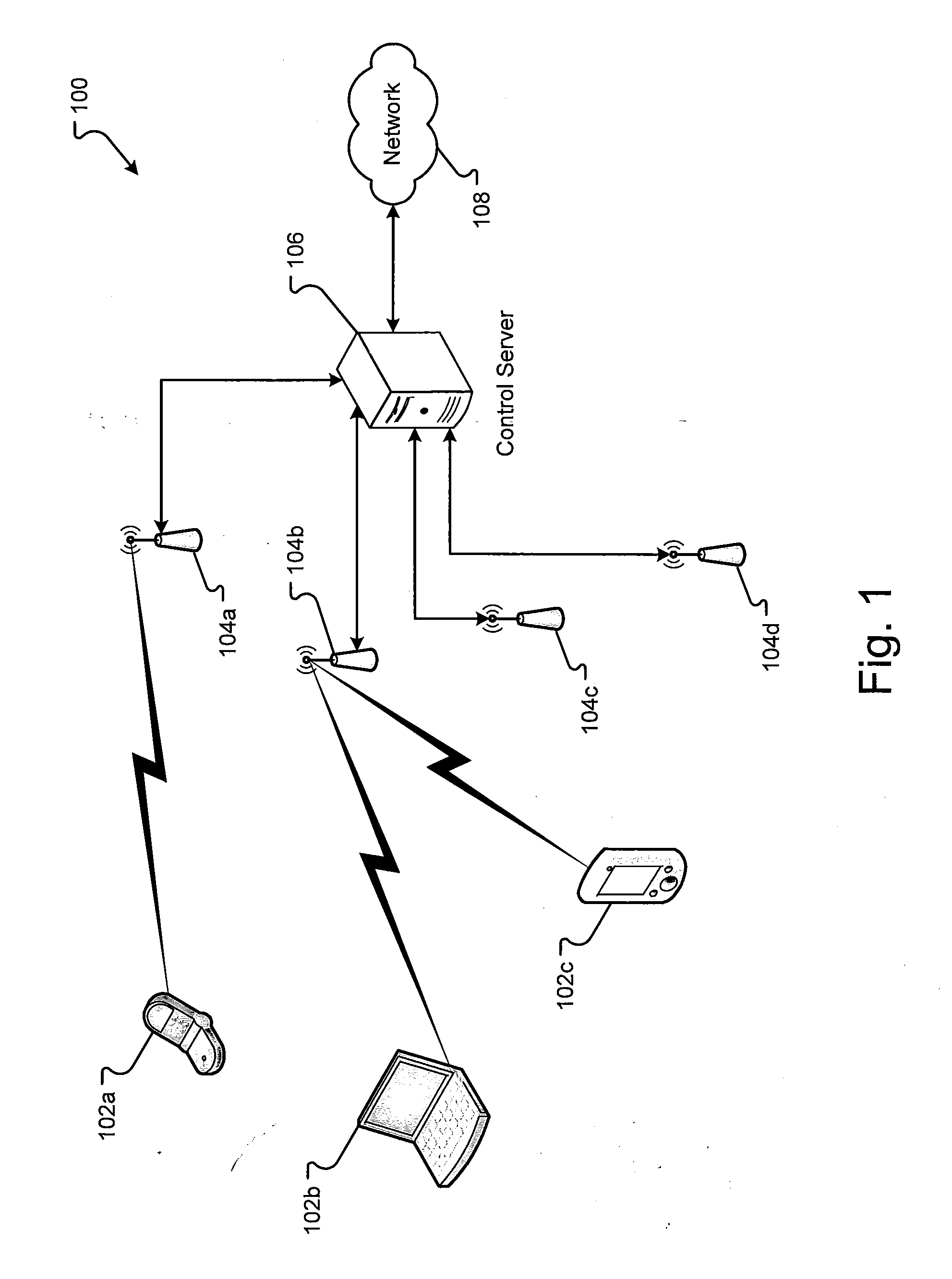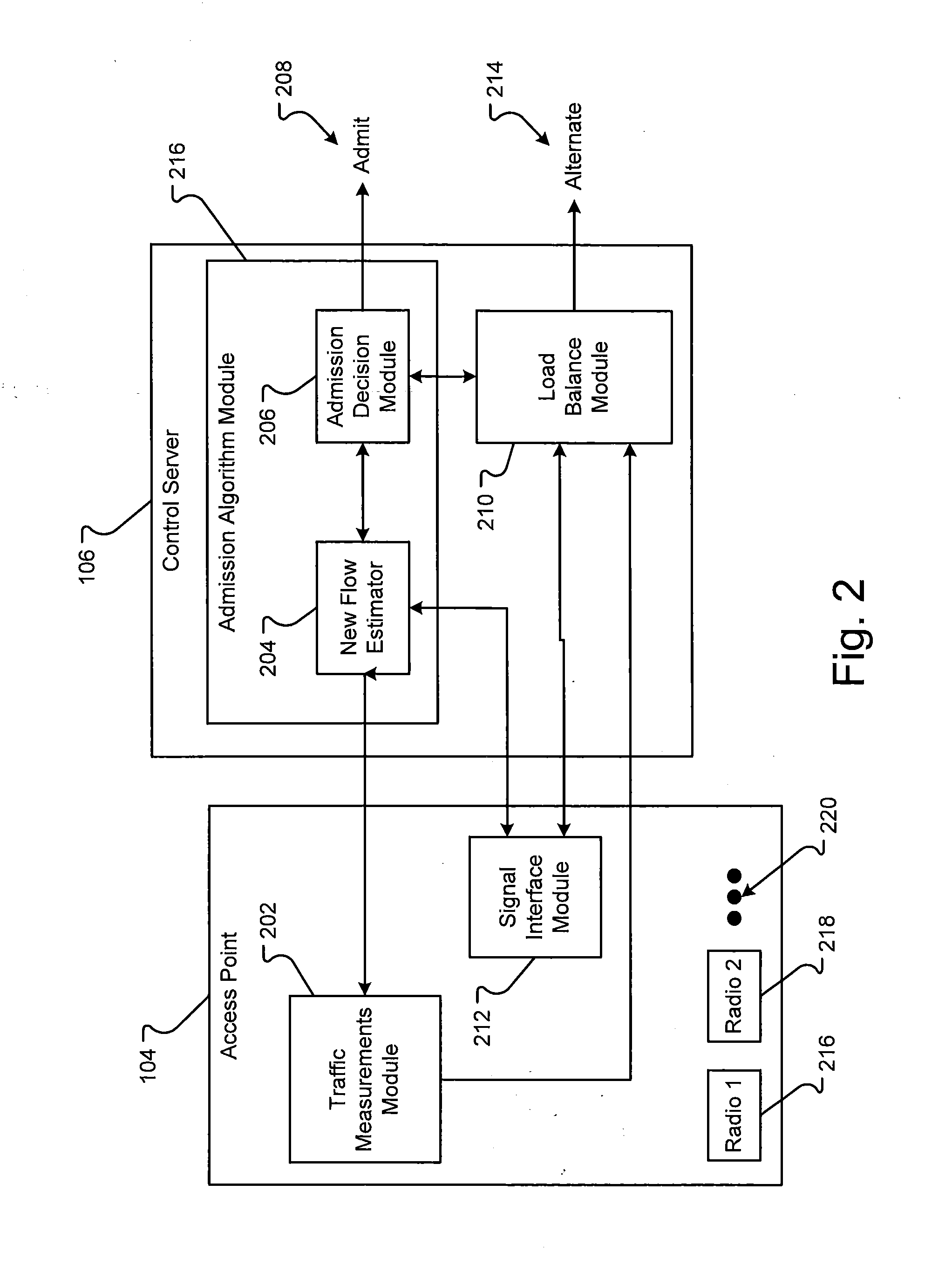Proactive load distribution for 802.111-based wireless lans
a wireless lan and active load technology, applied in the field of active load distribution of 802.111-based wireless lans, to achieve the effect of improving quality of connection, less interference, and more available rf resources
- Summary
- Abstract
- Description
- Claims
- Application Information
AI Technical Summary
Benefits of technology
Problems solved by technology
Method used
Image
Examples
Embodiment Construction
[0031]The ensuing description provides embodiments only, and is not intended to limit the scope, applicability, or configuration of the claims. Rather, the ensuing description will provide those skilled in the art with an enabling description for implementing the embodiments. It should be understood that various changes may be made in the function and arrangement of elements without departing from the spirit and scope of the appended claims.
[0032]A communication system 100 for determining the admission of a communication session to an access point 104 is shown in FIG. 1. Communication system 100 can include at least one mobile device 102a, 102b and / or 102c, at least one wireless access point 104a, 104b, 104c, and / or 104d, and at least one control server 106. The communication system 100 can have more or, fewer mobile devices 102, access points 104, or control servers 106 than those shown in FIG. 1. The communication system 100 of FIG. 1 is provided only as an example to help describ...
PUM
 Login to View More
Login to View More Abstract
Description
Claims
Application Information
 Login to View More
Login to View More - R&D
- Intellectual Property
- Life Sciences
- Materials
- Tech Scout
- Unparalleled Data Quality
- Higher Quality Content
- 60% Fewer Hallucinations
Browse by: Latest US Patents, China's latest patents, Technical Efficacy Thesaurus, Application Domain, Technology Topic, Popular Technical Reports.
© 2025 PatSnap. All rights reserved.Legal|Privacy policy|Modern Slavery Act Transparency Statement|Sitemap|About US| Contact US: help@patsnap.com



